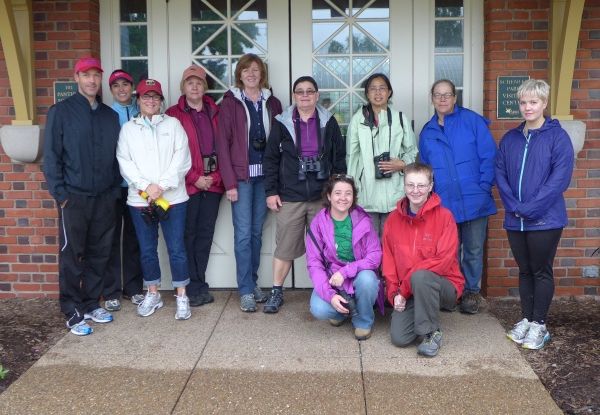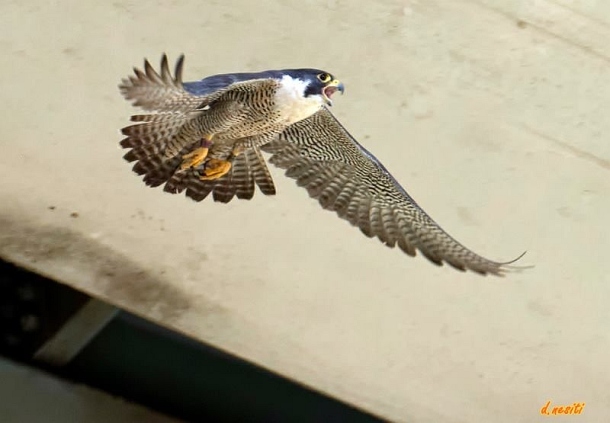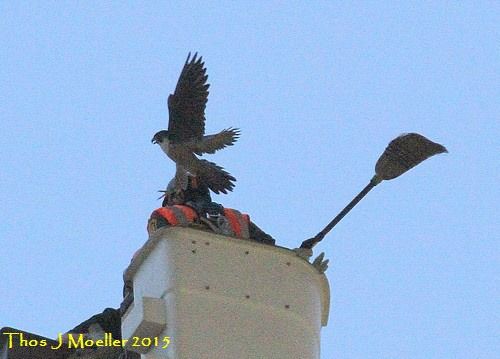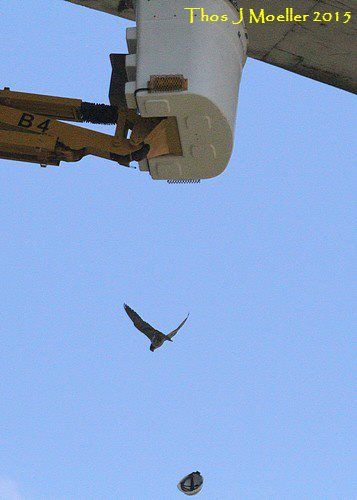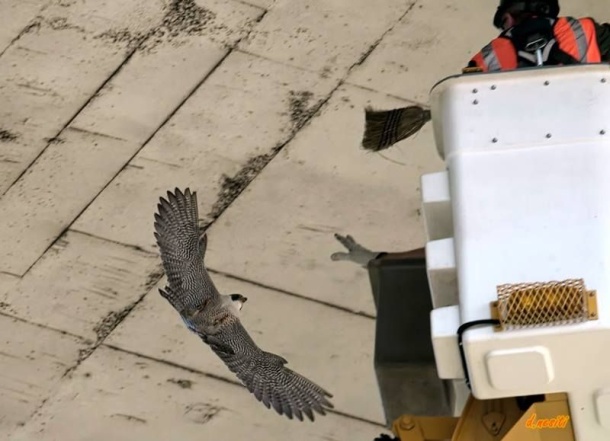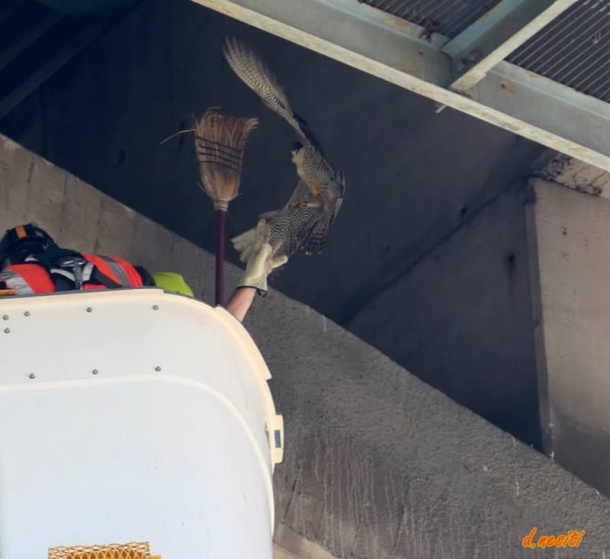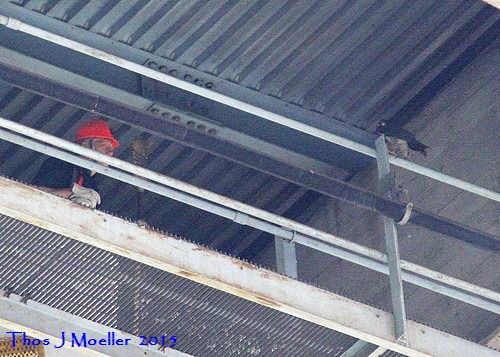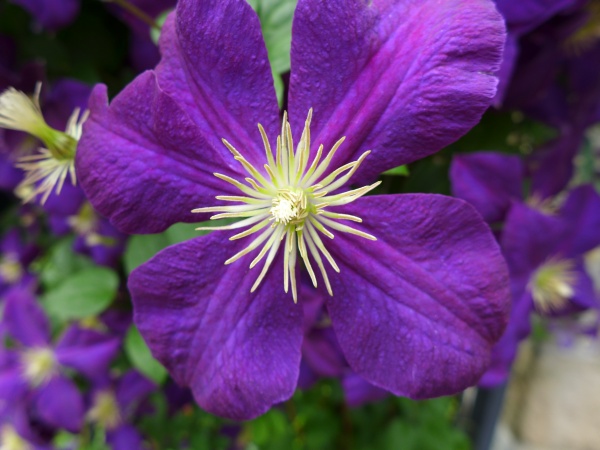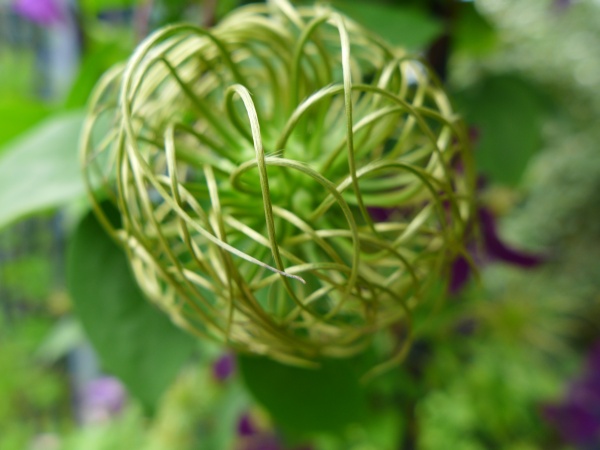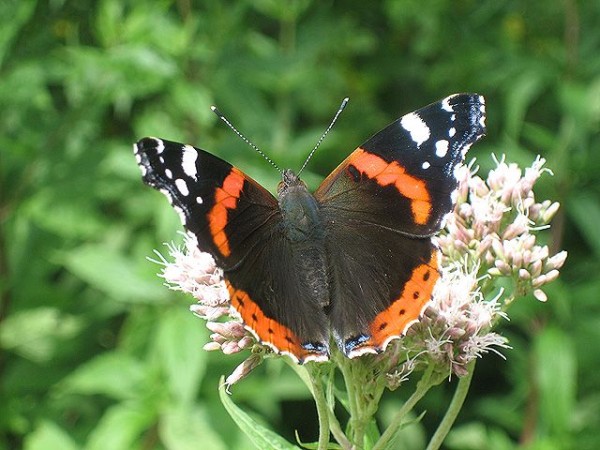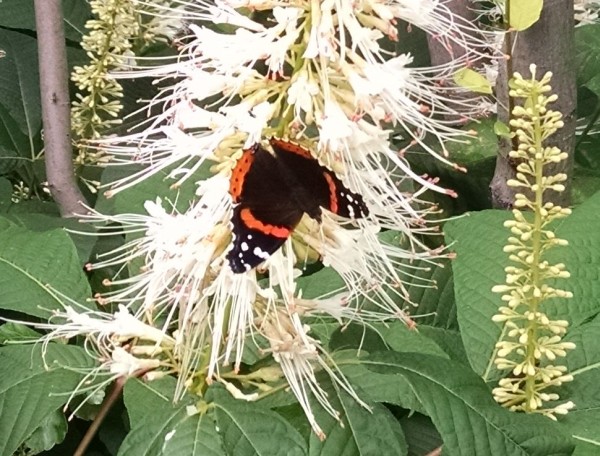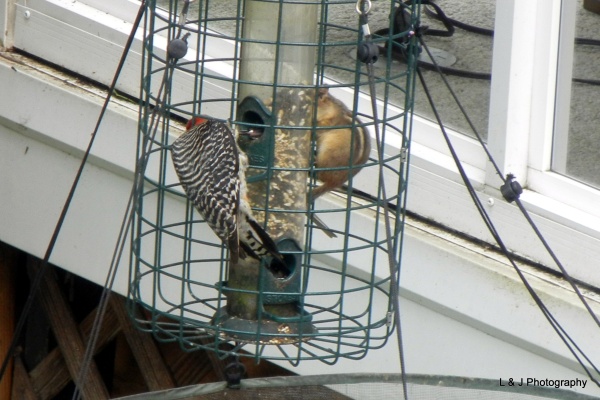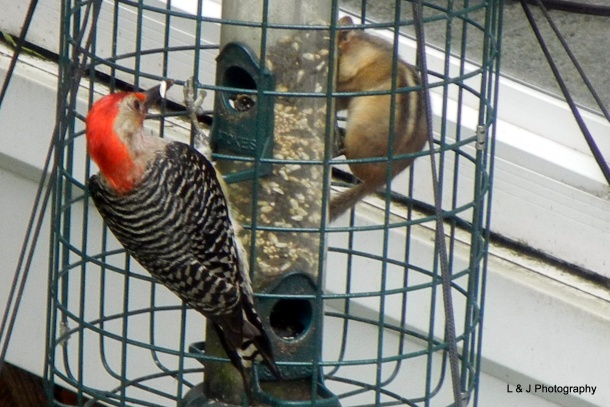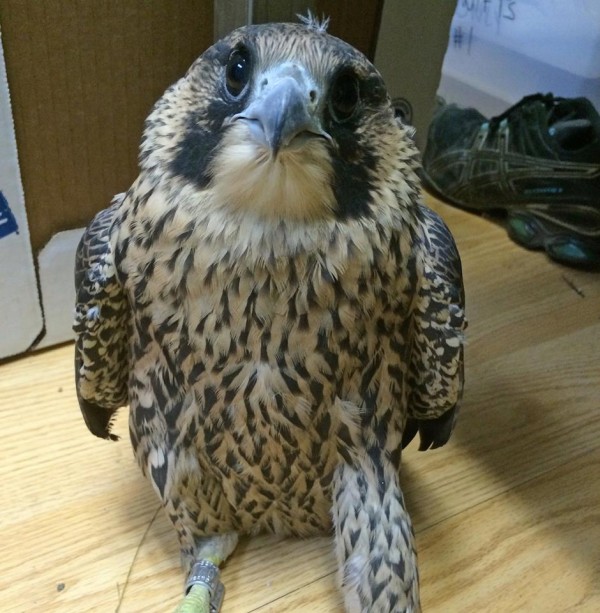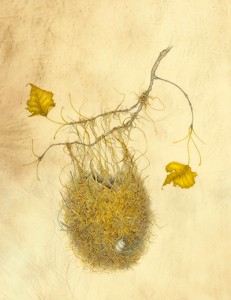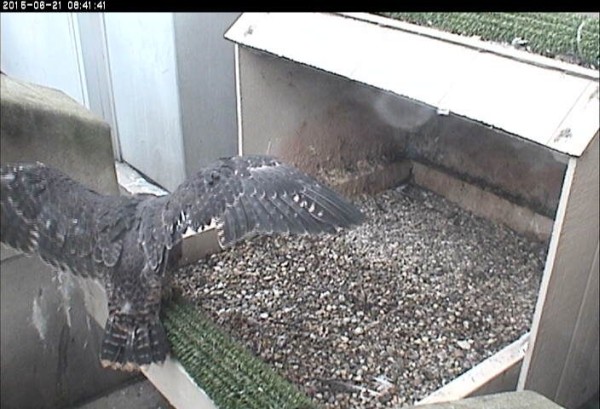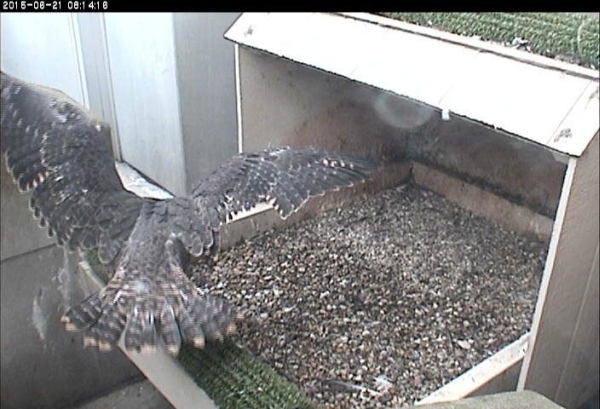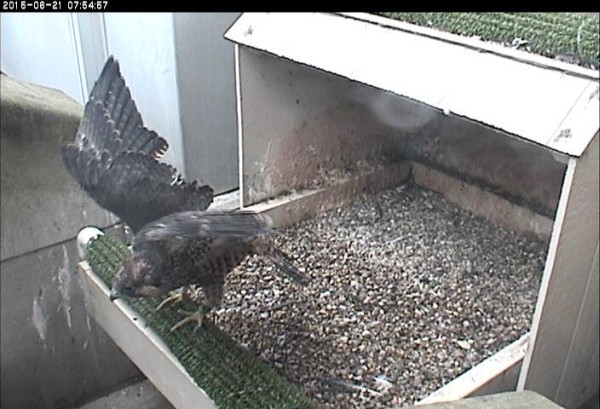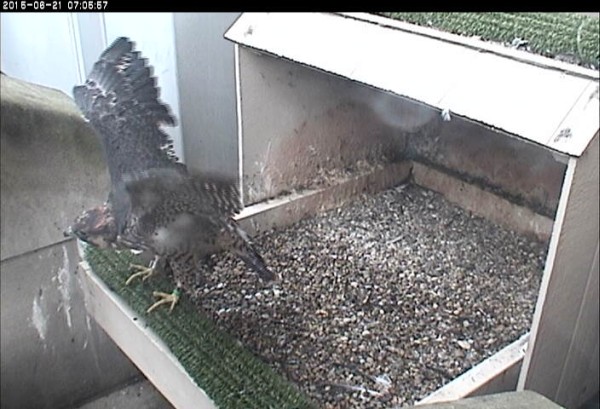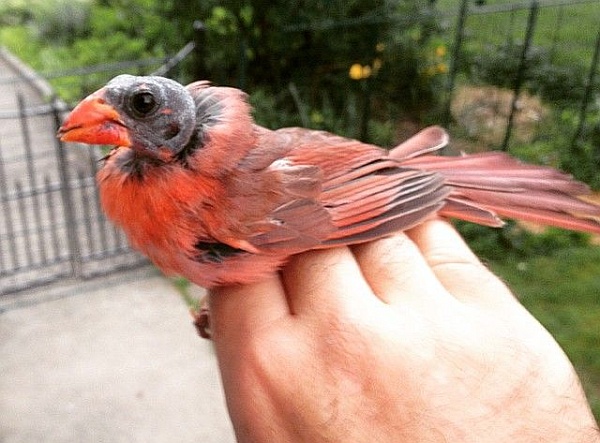
It’s that time of year again when some birds go bald. Don’t worry. They won’t stay that way.
Bird bander Matt Webb explained why this happens when he posted his photo of a bald northern cardinal on Facebook:
“The loss of [head] feathers is due to feather mites. They are able to deal with the mites on the rest of their body, but end up breaking their feathers off their heads when they scratch at the mites. They will re-grow the feathers this fall. It’s actually a pretty common and normal occurrence with Northern Cardinals and Blue Jays, and seems to be prevalent at this time of year.”
Two weeks ago I saw a bald blue jay near Schenley Plaza. He didn’t want me to take his picture so I had to keep my distance. In this photo he almost looks normal …
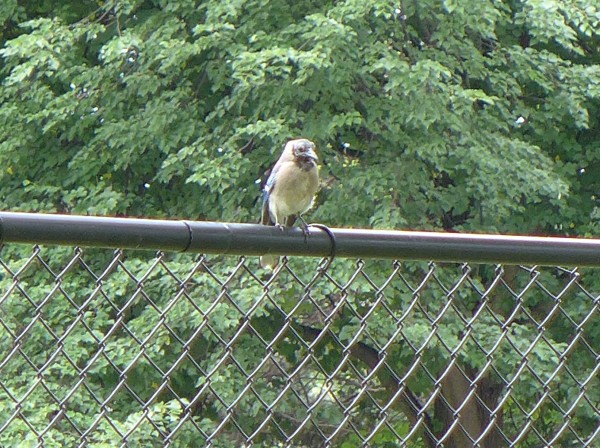
… but when he turns his head he’s bald with an Elizabethan ruff around his neck. 😉
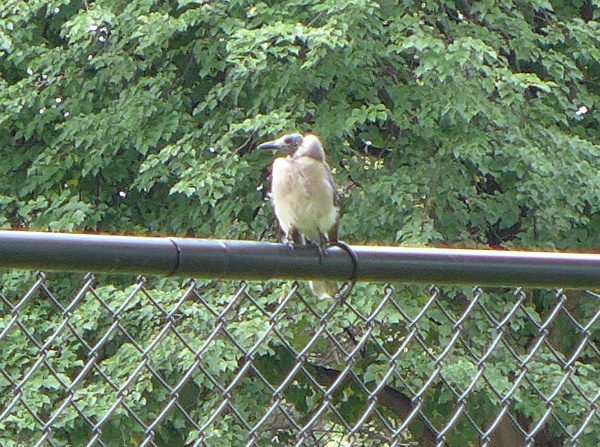
When birds are bald you can see that …
- Their ears are holes below their eyes, though usually covered by feathers. Our ears are holes too, partly covered by a flap of skin.
- Their eyes are large compared to the size of their heads.
- The northern cardinal’s skin and the roots of his feathers are black.
- The blue jay’s skin is dark but the roots of his feathers are not.
Have you seen any bald birds lately?
(Vultures don’t count! They’re always bald.)
(photo of bald northern cardinal photo by Matt Webb, photos of bald blue jay by Kate St. John)
